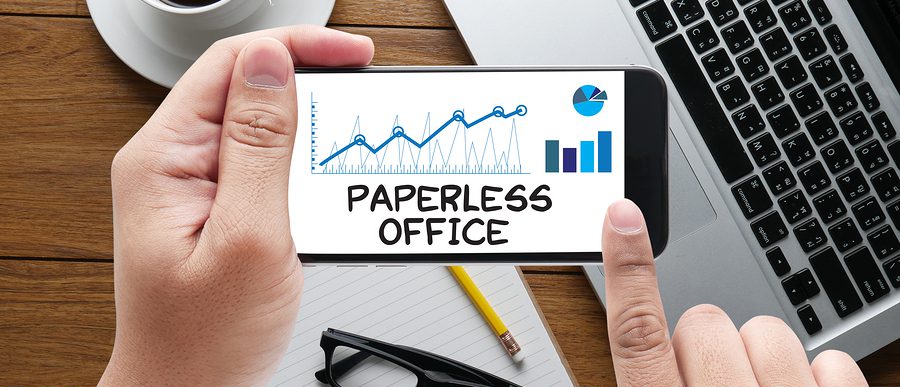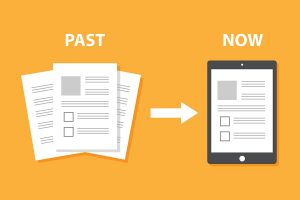
In today’s fast-paced and environmentally-conscious world, businesses are increasingly recognizing the benefits of going paperless. Transitioning to a paperless office not only increases efficiency and reduces operational cost but also significantly minimizes your environmental impact. As technology continues to advance, the tools and solutions available for digitizing your workflows have become more accessible and effective than ever before. Let’s help your business embrace a more sustainable and streamlined future with these 7 easy steps to going paperless.
Why Go Paperless?

Transitioning to a paperless office offers a multitude of benefits that enhance both efficiency and sustainability. One of the most significant advantages is cost savings. Businesses can reduce expenses related to paper, ink, and storage, potentially saving around $1,000 per employee annually, as the average office worker uses 10,000 sheets of paper each year. You will also improve organization and easily access your digital files, allowing for better collaboration among your team members, regardless of their location.
Moreover, going paperless enhances security by enabling better document tracking of document access and modifications, which is crucial for compliance with data privacy regulations. Reducing paper usage also contributes to a smaller carbon footprint and demonstrates your commitment to sustainability. Additionally, digital files can be easily backed up, ensuring business continuity in case of disasters. Overall, adopting a paperless approach not only boosts operational efficiency but also aligns with modern values of environmental responsibility.
7 Steps to Going Paperless
By following these steps, you can successfully transition to a paperless office, leading to a more efficient, cost-effective, and environmentally friendly workplace.
1. Assessment and Planning
Firstly, evaluate your current paper usage. Assess how much paper your office uses and identify key areas where paper is most frequently used. Then, set goals. Define clear objectives for going paperless, such as reducing paper usage by a certain percentage within a specific timeframe.
2. Find the Right Digital Tools and Software
Invest in a strong document management system (DMS) to store, organize, and manage your electronic documents. Use collaboration platforms to facilitate communication and project management. In addition, implement cloud storage solutions for easy access and sharing of documents.
3. Digitize Existing Documents
Use a high-quality scanning service to convert your physical documents into digital formats. In addition, have your service provider implement OCR technology to make your scanned documents searchable. You can also ask for day-forward scanning where any new paperwork will be automatically scanned into your system.
4. Adopt Paperless Processes
Use electronic signature tools to replace physical signatures. Furthermore, create digital forms to internal and external use. Switch to electronic invoicing and billing systems and use digital tools for scheduling, conducting, and documenting meetings.
5. Training and Adoption
Provide training sessions to educate employees on new digital tools and processes. Offer ongoing support an resources to help employees adapt to the new system.
6. Review and Optimize
Regularly track the progress of your paperless initiative. Gather feedback from your employees to identify any challenges and areas for improvement. Continuously refine and optimize processes to ensure the paperless system is working effectively.
7. Security and Backup
Implement strong security measures to protect digital documents from unauthorized access. Your DMS and cloud storage should offer features such as access controls, two-factor authorization, encryption, and more. Lastly, ensure your digital documents are being regularly backed up to prevent data loss.
Ready to Go Paperless?
Record Nations can help you convert to a productive and environmentally-friendly paperless office with local experts that have years in the business. To get free, no-obligation quotes or to learn more about our scanning or digital storage solutions, give us a call at (866) 385-3706 or fill out the form.












